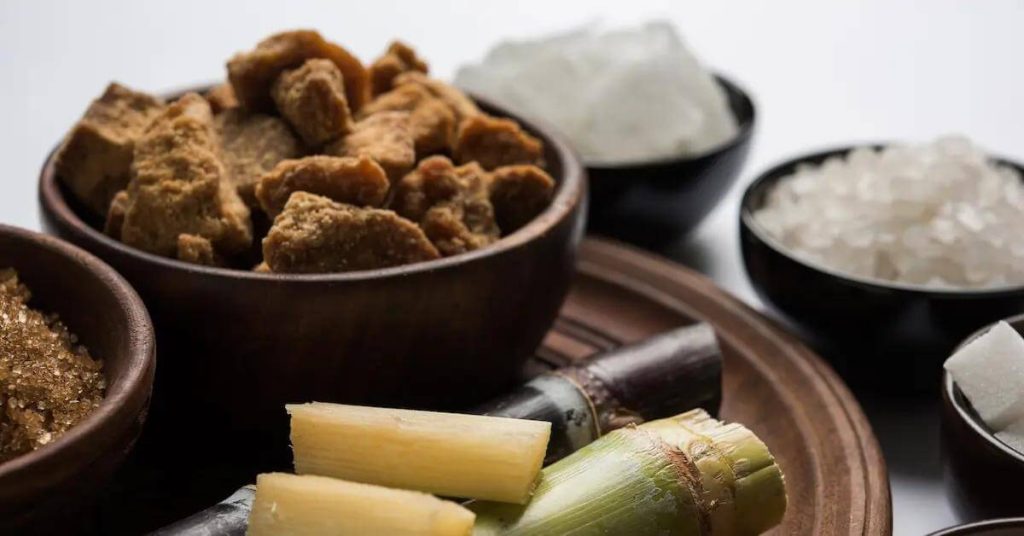A Comprehensive Guide to the Ecological Effect and Sustainability Practices in Cane Sugar Handling
The ecological effect of walking cane sugar processing presents a complicated selection of difficulties that warrant mindful exam. From dirt degradation and excessive water usage to the carbon footprint associated with growing and manufacturing, the repercussions of typical practices are far-reaching. What particular methods can be applied to strike a balance in between efficiency and environmental stewardship?
Review of Walking Cane Sugar Processing
Walking cane sugar processing includes a series of organized actions that change sugarcane right into refined sugar. Initially, collected sugarcane is transported to processing facilities, where it goes through cleaning up to remove soil and particles. Following this, the walking stick is crushed to extract juice, which is after that clarified by getting rid of impurities through home heating and the addition of lime.
The made clear juice undergoes dissipation, where water is eliminated to concentrate the sugar web content. This focused syrup is after that taken shape with air conditioning, enabling sugar crystals to develop. These crystals are divided from the remaining syrup making use of centrifugation, resulting in raw sugar. To accomplish refined sugar, the raw item goes through further purification procedures, which may include washing and filtering to remove continuing to be contaminations and color.
The end product is then dried out and packaged for distribution. Throughout this whole procedure, maintaining performance and high quality control is important to make sure the sugar satisfies sector requirements. Each step in walking stick sugar processing not just adds to the last product but also has ramifications for resource use and waste generation, establishing the stage for conversations on sustainability and ecological influences associated with sugar production.
Environmental Difficulties of Production
The manufacturing of walking cane sugar provides several considerable environmental challenges that warrant interest. One main concern is the comprehensive usage of agrochemicals, including pesticides and plant foods, which can cause dirt destruction, biodiversity loss, and contamination of neighborhood water resources. The drainage from sugarcane areas usually brings these chemicals right into close-by ecosystems, disrupting aquatic life and influencing the health of areas reliant on these water bodies.
Another obstacle is the high energy intake connected with sugarcane processing. The boiling and refining phases call for considerable warmth, mainly generated by shedding fossil gas, contributing to greenhouse gas emissions. In addition, the large land location needed for sugarcane farming can bring about deforestation and habitat damage, further intensifying climate adjustment and threatening wild animals.
Additionally, the labor practices in some regions raise ethical worries, as workers might deal with poor working conditions and inadequate earnings. This situation frequently perpetuates a cycle of hardship in neighborhood areas. Cane Sugar Processing. Attending to these ecological difficulties is important for developing much more sustainable techniques in cane sugar manufacturing, inevitably profiting both the environment and the communities entailed in this sector
Water and Land Usage Impact
Water resources and land application are crucial parts in the cane sugar market that significantly impact the atmosphere. The growing of sugarcane needs substantial water input, with price quotes suggesting that it can consume up to 2,000 litres of water per kg of sugar generated. This intensive use of water usually causes exhaustion of neighborhood water sources, affecting not only the sugarcane plantations yet also bordering ecological communities and areas that rely upon the exact same water sources for farming and domestic usage.

Furthermore, land use for sugarcane growing can result in deforestation and the conversion of all-natural habitats right into monoculture haciendas. This technique decreases biodiversity, disrupts local communities, and adds to dirt degradation. The expansion of sugarcane areas often trespasses on beneficial farming land, creating competition for sources in between food and biofuel production.
Sustainable practices, such as enhancing irrigation techniques and applying crop rotation, are important to reduce these impacts. By taking on a lot more reliable water usage and land monitoring methods, the walking click here for more info stick sugar market can lower its environmental impact, guaranteeing an equilibrium between agricultural performance and environmental conservation.
Greenhouse Gas Emissions
Greenhouse gas discharges stand for a significant ecological concern within the walking stick sugar handling sector, specifically as farming practices increase to satisfy international demand. The cultivation of sugarcane, a crop that thrives in tropical climates, depends heavily on synthetic fertilizers and pesticides, which contribute to laughing gas discharges. In addition, land-use modifications, including deforestation for brand-new sugarcane plantations, launch co2 saved in plants and soil.
Throughout processing, energy consumption is an additional significant resource of greenhouse gas discharges - Cane Sugar Processing. Numerous sugar mills use fossil gas to power machinery and produce warmth, leading to significant carbon impacts. In addition, the transport of raw sugarcane and finished items adds layers of discharges via gas burning in lorries
This includes evaluating present farming techniques, refining methods, and transportation systems to determine areas for renovation and reduction. Resolving greenhouse gas discharges is necessary for cultivating an extra lasting walking stick sugar sector in an altering environment.

Lasting Practices and Innovations
Sustainable practices and developments are progressively important in the walking stick sugar processing industry as stakeholders look for to decrease environmental impacts while maintaining performance. One considerable improvement is the implementation of incorporated crop monitoring, which maximizes source usage by integrating dirt management, insect control, and plant rotation methods. This method improves return while minimizing chemical inputs and preserving dirt health.
Moreover, the adoption of eco-friendly energy sources, such as biomass from sugarcane deposits, has acquired traction - Cane Sugar Processing. By transforming waste items into energy, refining centers can decrease their reliance on nonrenewable fuel sources, thereby reducing greenhouse gas discharges
Water administration techniques have additionally seen renovations with the recycling and reusing of water in processing plants, significantly reducing freshwater usage. Advancements in innovation, such as precision agriculture, allow farmers to keep an eye on crop health and wellness and source use more efficiently, guaranteeing lasting growing methods.
Additionally, accreditation programs like Fair Profession and Rainforest Partnership encourage ecologically responsible farming practices and promote social equity within the supply chain. By welcoming these sustainable practices and developments, the walking cane sugar processing industry can improve its durability and add favorably to ecological stewardship.
Conclusion
The ecological influence of walking stick sugar processing presents considerable challenges, including soil deterioration, high water intake, and greenhouse gas emissions, along with moral concerns associated to labor methods. Addressing these concerns through sustainable methods, such as incorporated crop management, renewable power fostering, and water recycling, is necessary. By promoting socially equitable and ecologically liable methods in sugar manufacturing, the market can minimize its unfavorable effects, making certain a more sustainable future for both communities and environments associated Learn More with this field.
Cane sugar processing includes a series of systematic actions that change sugarcane into refined sugar. Each step in walking cane sugar processing not just contributes to my sources the last product however also has ramifications for source usage and waste generation, establishing the stage for conversations on sustainability and environmental impacts linked with sugar manufacturing.
Greenhouse gas discharges represent a considerable ecological worry within the walking stick sugar processing industry, especially as farming techniques increase to satisfy global need.Sustainable practices and advancements are increasingly important in the walking cane sugar processing market as stakeholders seek to reduce ecological influences while keeping performance.The environmental influence of cane sugar handling presents substantial difficulties, including soil degradation, high water consumption, and greenhouse gas discharges, together with moral problems associated to labor practices.